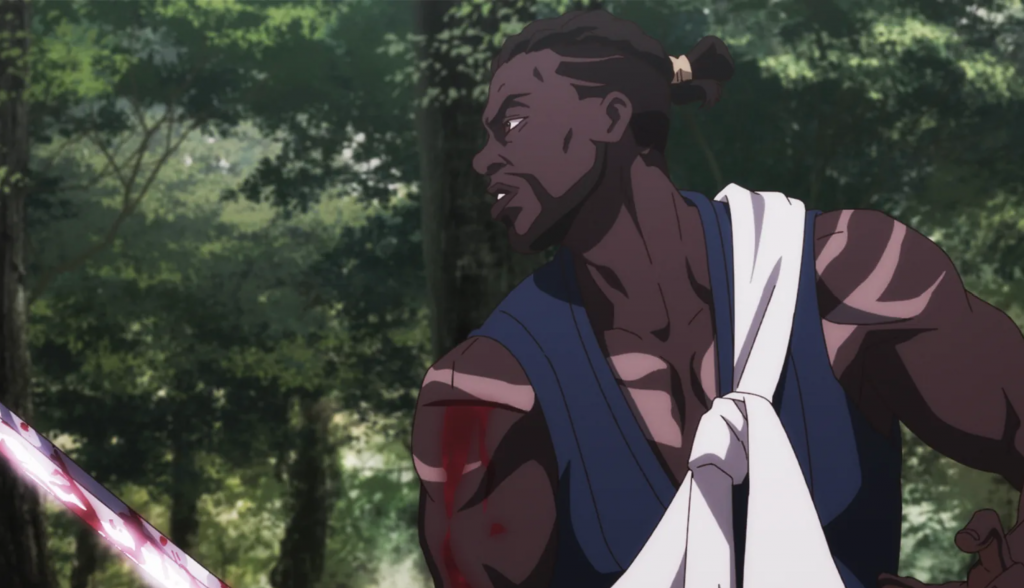Netflix’s original anime content has been very hit-and-miss. For every Devilman Crybaby, there’s also been something like Neo Yokio. Yasuke, unfortunately, falls into the latter camp, despite having a prestigious studio like MAPPA attached to do the animation and a potent main character whose real-life history had the potential for a great story. Instead of focusing on that, however, series creator LeSean Thomas immerses the anime into a hodgepodge of fantasy and sci-fi elements which fail to gel together.
Yasuke (LaKeith Stanfield) is a former samurai who was captured from Africa by the Portuguese and later bought by ambitious Japanese warlord Oda Nobunaga to serve as his personal servant. He rose through the ranks, eventually becoming a skilled samurai, before being involved in a losing battle where Nobunaga commits seppuku and Yasuke serves as his kaishakunin, beheading his lord. Twenty years later, Yasuke is still haunted by the defeat. He works as a boatman in a quiet village, but soon finds himself drawn into trouble when he is asked to escort a woman and her daughter to see a doctor in a distant land. The daughter, Saki, displays formidable telekinetic powers, and attracts attention from bad people and mercenaries.
We get a glimpse into Yasuke’s character and history through flashbacks that show his time served under Nobunaga. However, he is soon sidelined in favor of the main story, which starts with a maniacal preacher hiring a group of unique mercenaries (a shaman, a werebear, a mech operator and a robot) to capture Saki, and then shifts into the deadly and ancient Daimyo Hojo sending her forces to capture Saki and destroy the remnants of Nobunaga’s followers. The action is decent, often rising to slick, visceral heights. The soundtrack, produced by Flying Lotus, is distinctive, with memorable intro and ending tracks. However, these things aren’t enough to stop Yasuke from becoming an inconsistent mess.

The show’s insistence on mixing disparate fantasy and sci-fi elements is jarring from the get go.
We see the climactic battle of Honnō-ji, but this time with mechs, cursed samurais and telekinetic warriors. This diminishes the meaningfulness of retaining other historical elements such as authentic attire and historical characters like Nobunaga, Ranmaru and Mitsuhide. Even the action feels meaningless as the show goes on as Yasuke and Saki face off against stronger and stronger foes, and Saki continues to be a boring deus ex machina. The mercenary characters return during the third act of the series, but are soon dispatched unceremoniously.
LaKeith Stanfield is decent as Yasuke, but he doesn’t get to fully explore the character. It’s a pity that Yasuke is as much of a mess as it is, because it is well-produced and involves talented artists. The story is weak and you’re probably going to forget it five minutes after finishing the series. It would have been so much better to focus on Yasuke’s time as a servant under the Portuguese and then how he rose through the ranks under Nobunaga. Let’s hope that future Netflix anime offerings are better conceptualized (and better realized) than this.